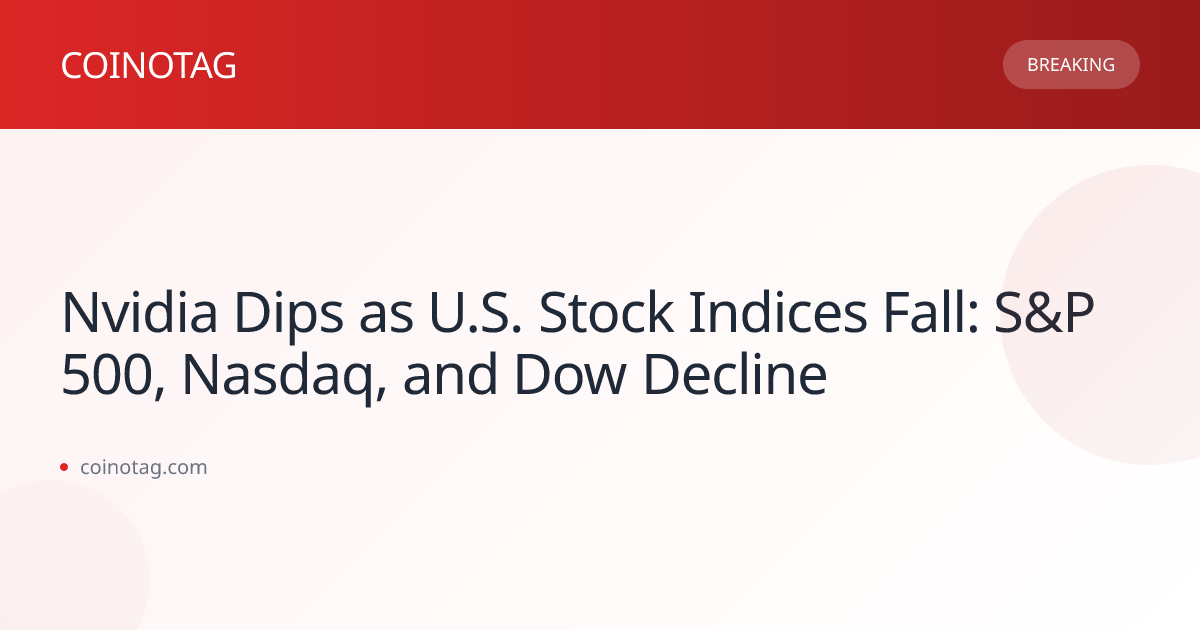
BitcoinWorld Bitcoin Price Collapse Warning: Mining Profitability Crashes to Decade Low Cryptocurrency investors face alarming news as SwanDesk CEO Jacob King issues a stark warning about an impending Bitcoin price collapse. The driving force behind this concerning prediction? Mining profitability has plummeted to its lowest point in ten years, creating what experts call a perfect storm for market turmoil. Why Is Bitcoin Price Collapse Now Inevitable? Jacob King reveals shocking numbers that paint a grim picture. The current cost to mine one Bitcoin stands at $112,000, while the asset trades at only $86,000. This significant gap creates unsustainable pressure on mining operations worldwide. Miners now operate at a substantial loss, which historically precedes major market corrections. The situation grows more critical daily. As mining becomes unprofitable, operations must make difficult decisions. Many smaller mining companies already face bankruptcy, while larger operations consider scaling back. This creates a domino effect that could trigger the feared Bitcoin price collapse. How Mining Profitability Impacts Bitcoin’s Future Understanding the mining profitability crisis requires knowing how Bitcoin’s ecosystem functions. Miners provide essential security and transaction processing services. When they operate at a loss, the entire network’s stability comes into question. Key factors driving the current crisis include: Rising energy costs worldwide Increased mining difficulty adjustments Older mining equipment becoming obsolete Regulatory pressures in key mining regions These elements combine to create the worst mining environment in a decade. King emphasizes that without immediate price recovery, the Bitcoin price collapse becomes unavoidable. What Chain Reaction Could Follow Mining Shutdowns? The potential consequences extend far beyond mining operations. When miners cease operations, several critical network effects occur simultaneously. Transaction processing slows, network security weakens, and selling pressure increases as miners liquidate holdings to cover costs. This creates a self-reinforcing cycle of decline. As more miners shut down, network security decreases, reducing investor confidence. Lower confidence leads to more selling, further depressing prices and accelerating the Bitcoin price collapse prediction. Can Anything Prevent the Bitcoin Price Collapse? While the situation appears dire, potential solutions exist. The market could see several developments that might avert the worst-case scenario: Major price recovery above mining costs Technological breakthroughs in mining efficiency Institutional intervention to support the market Regulatory changes reducing operational costs However, time is critical. King stresses that without rapid improvement, the Bitcoin price collapse could occur within months rather than years. What Should Investors Do Now? Facing this potential Bitcoin price collapse, investors need strategic approaches. Diversification becomes crucial, as does understanding market fundamentals. Monitoring mining profitability metrics provides early warning signs of market direction. Consider these protective measures: Reduce exposure to mining-dependent cryptocurrencies Increase cash positions for buying opportunities Monitor network hash rate changes closely Set strict stop-loss orders on existing positions The current warning about Bitcoin price collapse serves as a crucial reminder that cryptocurrency investing requires constant vigilance and understanding of underlying market mechanics. Frequently Asked Questions What exactly causes mining to become unprofitable? Mining becomes unprofitable when electricity, equipment, and operational costs exceed the value of mined Bitcoin. Currently, mining costs exceed Bitcoin’s market price by $26,000 per coin. How quickly could a Bitcoin price collapse happen? According to King’s analysis, significant price deterioration could occur within 3-6 months if mining conditions don’t improve and current trends continue. Have we seen similar situations before? Yes, mining profitability crises occurred in 2018 and 2022, both preceding significant price corrections. However, the current gap between costs and price is historically unprecedented. Could this actually strengthen Bitcoin long-term? Potentially. Mining crises often eliminate inefficient operations, leaving stronger, more efficient miners. This could lead to a healthier ecosystem long-term, though short-term pain seems inevitable. What indicators should I watch most closely? Monitor network hash rate, mining difficulty adjustments, miner revenue metrics, and large exchange outflows from mining pools for early warning signs. Are alternative cryptocurrencies affected similarly? Proof-of-work cryptocurrencies face similar challenges, while proof-of-stake networks remain unaffected by mining profitability issues. If you found this analysis valuable, help other investors stay informed by sharing this article on your social media channels. Knowledge sharing strengthens our entire community during uncertain market conditions. To learn more about the latest Bitcoin trends, explore our article on key developments shaping Bitcoin price action and market dynamics. This post Bitcoin Price Collapse Warning: Mining Profitability Crashes to Decade Low first appeared on BitcoinWorld .
Bitcoin World
You can visit the page to read the article.
Source: Bitcoin World
Disclaimer: The opinion expressed here is not investment advice – it is provided for informational purposes only. It does not necessarily reflect the opinion of BitMaden. Every investment and all trading involves risk, so you should always perform your own research prior to making decisions. We do not recommend investing money you cannot afford to lose.
Revolutionary Kraken ETF: LeverageShares Files for 2x Long Boost

BitcoinWorld Revolutionary Kraken ETF: LeverageShares Files for 2x Long Boost Exciting news for crypto investors: LeverageShares has officially filed for a 2x long Kraken ETF, potentially revolutionizing how we gain exposure to cryptocurrency exchanges. This groundbreaking Kraken ETF could amplify daily returns based on Kraken’s performance, offering a fresh approach to crypto investments. But what does this mean for your portfolio, and how does it work? Let’s dive into the details. What Is the New Kraken ETF? According to Bloomberg senior ETF analyst Eric Balchunas, LeverageShares submitted paperwork for a 2x long ETF tied to Kraken’s daily performance. This Kraken ETF aims to double the daily returns of the crypto exchange, providing leveraged exposure without direct asset ownership. Essentially, if Kraken’s value rises 1% in a day, this ETF targets a 2% gain. However, it’s crucial to understand that leverage works both ways—losses can magnify too. This structure appeals to traders seeking short-term opportunities in the volatile crypto market. Why Consider Investing in This Kraken ETF? The proposed Kraken ETF offers several advantages for savvy investors. First, it simplifies access to crypto exchange performance without needing to hold cryptocurrencies directly. Second, the 2x leverage can enhance gains during bullish trends. Key benefits include: Amplified returns during Kraken’s positive performance days Regulated framework through traditional ETF structures Diversification within the growing crypto infrastructure sector Moreover, this Kraken ETF could attract institutional investors who prefer regulated products over direct crypto holdings. It represents another step toward mainstream crypto adoption. What Are the Potential Risks? While the Kraken ETF presents opportunities, it carries significant risks. The 2x leverage means losses could double during market downturns. Additionally, daily resets can lead to volatility decay—where compounded returns diverge from long-term performance. Investors should consider: Market volatility impacting leveraged positions Regulatory approvals pending for this Kraken ETF Liquidity concerns during extreme market movements Therefore, this product suits experienced traders comfortable with high-risk strategies rather than long-term buy-and-hold investors. How Does This Kraken ETF Impact the Crypto Landscape? This filing signals growing institutional interest in crypto-related financial products. A successful Kraken ETF could pave the way for similar offerings tied to other exchanges, broadening investment options. It also highlights Kraken’s positioning as a major player alongside traditional finance. As regulatory clarity improves, we may see more innovative products bridging crypto and conventional markets. Conclusion: A Bold Step Forward The LeverageShares Kraken ETF proposal marks an innovative leap in crypto investing. By offering leveraged exposure to exchange performance, it provides new tools for portfolio growth. However, always assess risks and consult financial advisors before investing. The crypto evolution continues, and this Kraken ETF could be a milestone in its integration with mainstream finance. Frequently Asked Questions What is a 2x long ETF? A 2x long ETF aims to double the daily returns of its underlying asset, using financial derivatives to amplify gains—and losses. How does the Kraken ETF differ from Bitcoin ETFs? While Bitcoin ETFs track cryptocurrency prices, this Kraken ETF focuses on the exchange’s performance, offering indirect crypto market exposure. When will the Kraken ETF launch? The launch depends on regulatory approvals. Filings typically take months, with no guaranteed timeline. Who should invest in this ETF? It suits risk-tolerant traders familiar with leverage. Beginners should start with standard ETFs. Can I lose more than I invest? Unlike some leveraged products, ETFs generally limit losses to your initial investment, but values can drop significantly. How do daily resets affect returns? Daily resets can cause volatility decay, where long-term returns differ from the underlying asset’s performance. Found this insight helpful? Share this article on social media to discuss the future of crypto ETFs with fellow enthusiasts! To learn more about the latest crypto market trends, explore our article on key developments shaping Bitcoin institutional adoption. This post Revolutionary Kraken ETF: LeverageShares Files for 2x Long Boost first appeared on BitcoinWorld . Bitcoin World

Alarming Crypto Correction Deepens: JPMorgan Reveals $4 Billion ETF Exodus
BitcoinWorld Alarming Crypto Correction Deepens: JPMorgan Reveals $4 Billion ETF Exodus Are you wondering why the cryptocurrency market continues to struggle despite recent stability? The alarming crypto correction we’re witnessing has a clear culprit according to JPMorgan’s latest analysis. The banking giant reveals that retail investors are driving massive outflows from spot Bitcoin and Ethereum ETFs, creating sustained downward pressure on digital asset prices. What’s Driving This Persistent Crypto Correction? JPMorgan’s comprehensive market report identifies a troubling pattern. While major liquidations from October have stabilized, the crypto correction continues unabated. The bank’s analysts point directly to retail investor behavior as the primary catalyst. These everyday investors are pulling billions from cryptocurrency investment vehicles, creating a domino effect across the entire digital asset ecosystem. This sustained selling pressure contrasts sharply with earlier market expectations. Many analysts predicted a quick recovery after October’s volatility. However, the current crypto correction demonstrates how retail sentiment can dramatically influence market direction. The situation highlights the evolving nature of cryptocurrency markets as they mature. How Massive Are These ETF Outflows Really? The numbers tell a compelling story about the severity of this crypto correction. Since November began, investors have withdrawn: $4 billion from spot Bitcoin and Ethereum ETFs This represents the largest outflow since February Continuous weekly withdrawals creating sustained pressure This massive capital flight marks a significant shift in investor sentiment. The crypto correction we’re experiencing isn’t driven by institutional panic or regulatory concerns. Instead, it’s everyday investors reassessing their risk exposure and taking profits amid uncertain market conditions. Why Should Investors Care About This Crypto Correction? Understanding the mechanics behind this crypto correction provides valuable insights for strategic planning. Retail ETF outflows create several important implications: Market sentiment indicator: Retail behavior often signals broader market trends Liquidity impact: Large outflows reduce market depth and increase volatility Buying opportunities: Corrections can create attractive entry points for long-term investors The current crypto correction serves as a reminder that cryptocurrency markets remain influenced by traditional investment behaviors. Despite the decentralized nature of blockchain technology, centralized investment products like ETFs still drive significant price action. What Does This Mean for Future Market Recovery? JPMorgan’s analysis suggests that this crypto correction could persist until ETF flows stabilize. However, history shows that cryptocurrency markets have remarkable resilience. Previous corrections have often preceded significant rallies as new investors enter at lower price points. The key question remains: when will retail confidence return? Market recovery likely depends on several factors including regulatory clarity, institutional adoption trends, and broader economic conditions. Meanwhile, this crypto correction provides a valuable case study in market dynamics. Frequently Asked Questions How long has this crypto correction been going on? The current phase of crypto correction began in November and has persisted due to continuous ETF outflows, marking one of the longest retail-driven downturns this year. Are institutional investors also selling during this crypto correction? According to JPMorgan’s report, the primary selling pressure comes from retail investors through ETF redemptions, while institutional activity has been more mixed. How does this crypto correction compare to previous market downturns? This crypto correction is notable for being primarily driven by ETF outflows rather than regulatory news or major liquidation events, making it unique in recent market history. Should I sell my cryptocurrency holdings during this crypto correction? Investment decisions should align with your risk tolerance and long-term strategy. Many investors use corrections to reassess their portfolio allocation and risk management approach. What would signal the end of this crypto correction? Market analysts suggest that stabilization in ETF flows combined with increasing trading volume could indicate the crypto correction is nearing its conclusion. How does this crypto correction affect new cryptocurrency projects? Market corrections often separate strong projects from weak ones, as investor scrutiny increases and funding becomes more selective during downturns. Found this analysis helpful? Share this crucial market insight with fellow investors on social media to help them understand the forces driving the current crypto correction. Your shares help build a more informed cryptocurrency community. To learn more about the latest crypto market trends, explore our article on key developments shaping Bitcoin and Ethereum price action. This post Alarming Crypto Correction Deepens: JPMorgan Reveals $4 Billion ETF Exodus first appeared on BitcoinWorld . Bitcoin World











